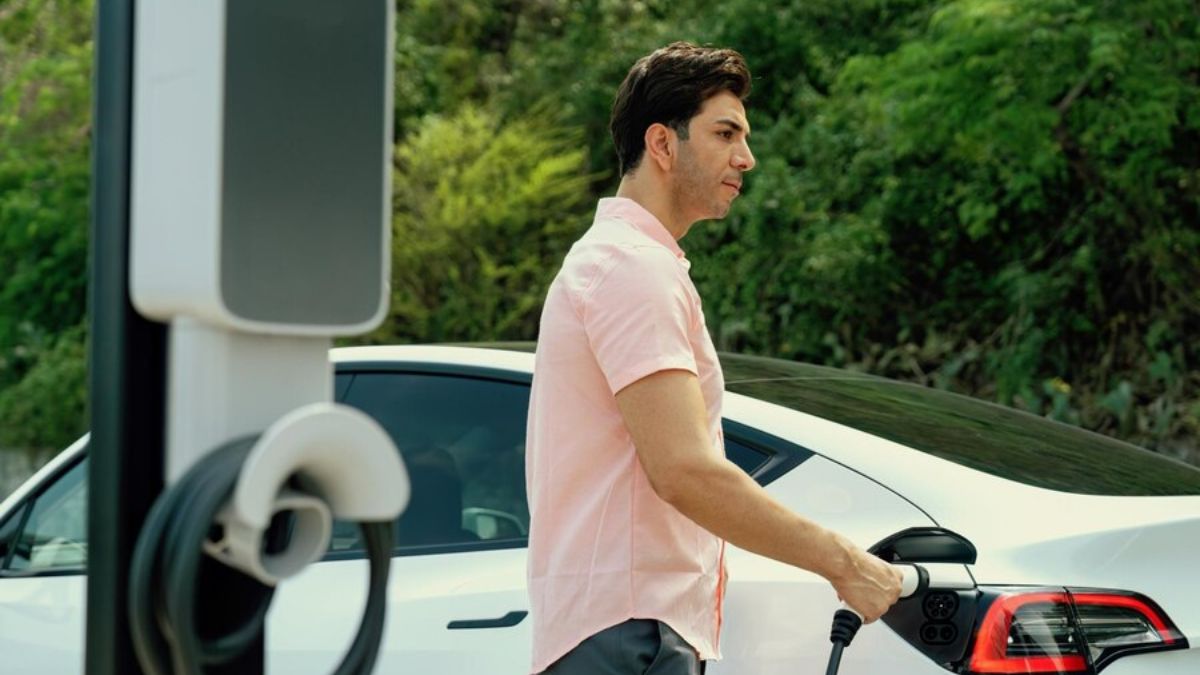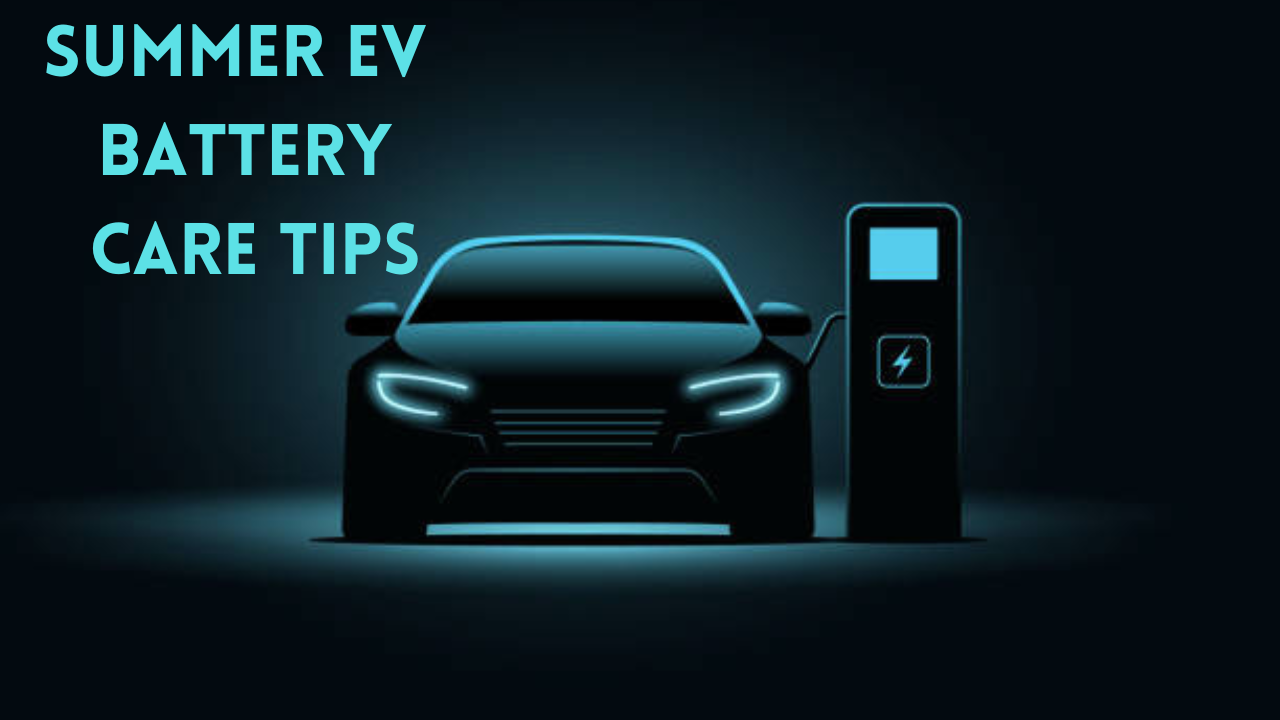Summer EV Battery Care Tips

As the peak summer months approach, it becomes important to diligently prepare and maintain electric vehicles (EVs). Summer EV Battery Care Tips poses significant challenges for all types of vehicles, whether powered by gasoline, electricity, or a combination of the two. Continuous sun can cause considerable damage, leading to reduced efficiency and potential long-term consequences. In India, the summer season brings unique challenges that EV owners must address to protect their batteries.
EV Battery Basics
Battery Type: EVs rely on lithium-ion (Li-ion) battery traction packs to power their drivetrains.
Optimal Temperature Range: These batteries operate most effectively within a temperature range of 60° to 95° F (15° to 35° C).
Overheating Risks: Above 95° F (35° C), EV Li-ion batteries typically begin to overheat, resulting in faster discharge rates, reduced energy storage capacity, and inefficiency over time. Electricity is distributed.
Effect of high temperature
Ion movement: At higher temperatures, the movement of ions within the battery speeds up, hindering effective bonding with the anode and cathode.
Structural Damage: Temperatures greater than 104° F (40° C) jeopardize the integrity of the anode’s passive emission layer and accelerate depletion of the liquid electrolyte. Excessive heat causes microcracks, slows important chemical reactions, and shortens the battery’s lifespan.
Internal resistance: Hot climate increases internal battery resistance, increasing charge times and reducing EV range.
Range loss and performance issues
Range loss: According to a recent study, the average range loss drops to 2.8% at 80°F (26.7°C), increasing to 5% at 90°F (32.2°C) and 31% at 100°F ( ) but becomes a substantial 31%. 37.8°C).
Regenerative braking: High temperatures can hinder regenerative braking efficiency, as the battery’s charge acceptance may be reduced to prevent overheating. Following manufacturer-recommended adjustments for regenerative braking settings generally ensures optimal performance and battery integrity in hot climates.
Strategies for managing EV batteries in summer
Charging Practices: To prevent the battery from aging faster, avoid fast charging in hot weather, especially after a long drive.
Parking: When parked in high temperatures, maintain optimal state of charge (SOC) to protect battery lifespan. Avoid leaving the vehicle in direct sunlight for extended periods of time.
Thermal management systems: Use the EV’s internal cooling system, which often requires the vehicle to be plugged in. Familiarize yourself with the specific requirements of your EV as advised by the manufacturer.

Summer EV Battery Care Tips
Cooling Methods for EV Batteries
Air cooling: Simple and cost effective but less efficient for larger battery packs.
PCM cooling: Keeps temperatures consistent but can be complicated to manage.
Liquid cooling: Highly effective but adds cost and complexity.
Evaporative cooling: potential compromise needed with more research.
Industry and Market Impact
Battery lifespan: Elevated temperatures can significantly impact the longevity of EV batteries, increasing maintenance costs and hindering market growth in hot regions.
Innovative Solutions: Researchers are exploring different cooling systems to manage heat effectively. To prevent rapid wear it is important to ensure that the battery temperature remains between 15°C and 35°C with minimal temperature difference.
Practical Tips for EV Owners
Keep your EV cool: Park in shady areas or use a sun shade to reduce heat exposure.
Monitor battery health: Check battery health and performance regularly, especially during prolonged hot weather.
Stay Informed: Stay updated on the latest research and recommendations for EV battery care in extreme conditions.
Understanding How Heat Affects EV Batteries
Hot temperatures can speed up chemical reactions inside EV batteries, leading to faster wear and tear. This may result in reduced energy storage, reduced driving range and overall performance. in extreme cases, Prolonged exposure to heat may permanently damage the battery. India’s extreme summer, with its intense heat and dry weather, creates additional challenges for EV batteries, causing them to overheat and degrade more quickly this is one of Summer EV Battery Care Tips.
How heat affects EV batteries
High temperatures act as a catalyst for accelerated chemical reactions within battery cells, accelerating the degradation process. This manifests itself in different ways:
Capacity loss: The battery’s ability to store energy is reduced.
Short Range: EVs can cover short distances on a single charge.
Compromised performance: A decline in overall efficiency.
Permanent Damage: Prolonged exposure may cause irreparable damage to the battery.
Preparing your EV battery for summer
As summer approaches, it’s important to ensure optimal performance and longevity of your EV battery. The intense heat and humidity present significant challenges, requiring comprehensive maintenance strategies. Here are advanced techniques and practices to protect your EV battery during the summer months this is one of Summer EV Battery Care Tips.
1. Strategic Parking Solutions
Seek shade: Park your EV in shady areas to reduce exposure to direct sunlight and reduce temperature rise.
Use a garage: Whenever possible, park the vehicle in a garage to protect it from heat and sunlight.
2. Vigilant cooling system maintenance
Regular Inspection: Check the cooling system frequently for optimal functionality. Monitor the coolant level and promptly address any leaks or malfunctions to prevent overheating.
Load management: Avoid overloading your EV, as excess weight can put a strain on the cooling system, especially in high temperatures.
3. Follow best charging practices
Gradual Charging: Opt for gradual charging methods instead of fast charging to reduce heat generation and stress on the battery.
Timing matters: Schedule charging sessions during cooler periods, such as early morning or late evening, to reduce heat-induced stress.
4. Careful battery management
Maintain optimal charge levels: Keep battery charge between 20% and 80% to promote longevity and prevent quick degradation.
Stay updated: Regularly update the EV’s battery management software to benefit from the latest performance optimization and thermal management algorithms.
5. Develop sensible driving habits
Drive smoothly: Adopt smooth driving techniques, avoiding aggressive acceleration and sudden braking, which can generate excess heat within the battery.
6. Proper Battery Maintenance
Early anomaly detection: Use a battery test kit like EV Doctor to continuously monitor battery health and performance metrics. Early detection of anomalies such as irregular temperature fluctuations or voltage deviations can prevent potential damage.
Data-driven insights: Use data from battery test kits to gain insight into battery health, safety, and performance, facilitating informed decision making.
Proactive maintenance: Implement maintenance regimens based on information from test kits, optimizing battery health and ensuring continued performance.
conclusion
As Summer EV Battery Care Tips, it’s important to take proactive steps to protect and maintain your EV battery. By understanding how heat affects battery performance and implementing these advanced maintenance strategies, you can ensure that your EV remains efficient and reliable all summer long. Adopting these practices not only increases battery longevity but also contributes to a smoother and more enjoyable driving experience during the hottest months of the year.

